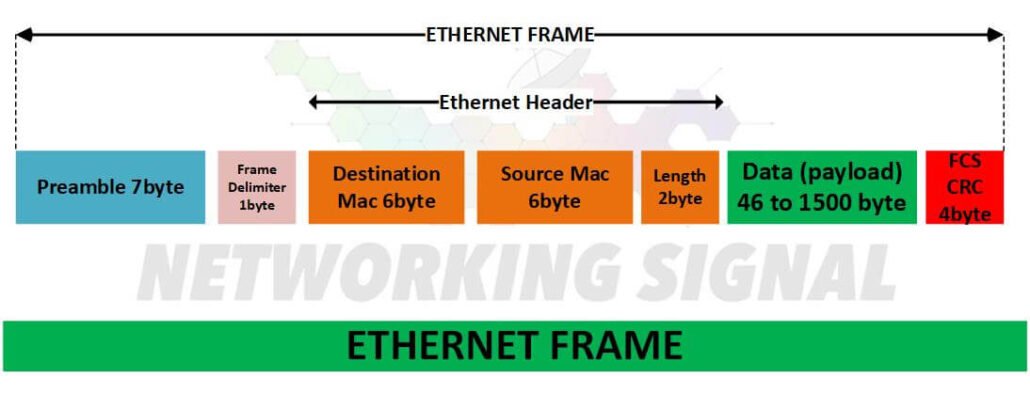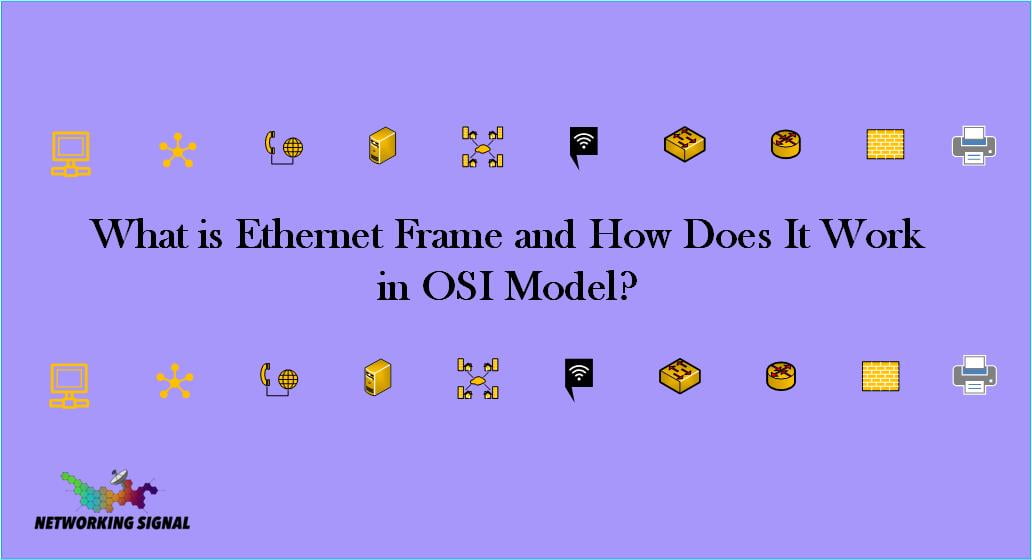What is Ethernet Frame?
An Ethernet frame is a data link layer protocol data unit and uses the underlying network topology of MAC addresses for communication between nodes on a network segment.
An Ethernet frame consists of two parts: an Ethernet header, followed by an Ethernet payload. The header contains destination and source MAC addresses, as well as other control information. The payload is either user data or Ethernet padding.
Ethernet frames are typically transmitted over physical media such as twisted pair cables or optical fiber. They can also be transmitted over wireless links. Each frame has a maximum payload size of 1500 bytes. If the user data is larger than this, it must be divided into multiple frames.
Format of Ethernet Frame
The format of an Ethernet frame is defined by the IEEE 802.3 standard.
Preamble: A 7-byte sequence is used to synchronize the receiver’s clock with the sender’s clock.
Header: Contains destination and source MAC addresses, as well as other control information. The header is variable in size but is typically 14 bytes.
Payload: The data to be transmitted. The payload is variable in size but must be at least 46 bytes.
Frame Check Sequence (FCS): A 4-byte checksum used to detect errors in the frame.
Ethernet frames can be either unicast, multicast, or broadcast. A unicast frame is sent from one node to another specific node. A multicast frame is sent from one node to a group of nodes. A broadcast frame is sent from one node to all nodes on the network.
Ethernet frames use the CSMA/CD (carrier sense multiple access with collision detection) protocols for media access control. This means that each node on the network listens to the medium to see if it is free before transmitting. If two nodes attempt to transmit at the same time, a collision occurs and both nodes must retransmit after a random delay.
Ethernet frames are typically encapsulated in another frame type for transmission over a wide area network (WAN). The most common encapsulation is an Ethernet over IP (EoIP) frame, which is used to transmit Ethernet frames over an IP network.
How Does the Frame Work in the OSI Model?

The Ethernet frameworks at the data link layer of the OSI model. The data link layer is responsible for providing reliable delivery of data frames between nodes on a network.
Ethernet frames use MAC addresses to identify the source and destination of each frame. MAC addresses are unique 48-bit identifiers assigned to each node on a network.
When an Ethernet frame is sent, the source node encapsulates the frame with its own MAC address and the destination MAC address. The frame is then sent to the next hop node, which checks the destination address and forwards the frame accordingly. This process continues until the frame reaches its final destination.
The data link layer also provides error detection and correction for Ethernet frames. This is done using the frame check sequence (FCS) field in the frame header. The FCS is a 4-byte checksum that is used to detect errors in the frame.
When an Ethernet frame is received, the receiver calculates the FCS and compares it to the value in the frame header. If the two values match, the frame is considered to be valid. If the two values do not match, the frame is considered to be corrupted and discarded.

